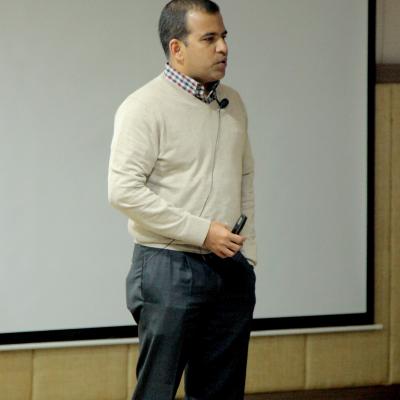A Sensor Cloud-based Community-Centric Approach for Analyzing and Mitigating Urban Heat Hazards
This project will analyze how smart and pervasive devices including human and vehicle-borne sensors can be harnessed to effectively map and identify urban heat islands (UHIs), and mitigate UHI associated risks on various communities. Excessive generation and retention of heat in urban areas by the built environment results in UHIs. Driven by climate change, extreme heat events are increasingly posing a major health hazard to many urban communities in U.S. and around the world. Studies analyzing the impact of UHIs on communities have primarily focused on generating coarse grained heat maps of cities using satellite or weather station data, and correlating heat events with human mortality and morbidity data. This exploratory project will develop and test a prototype community-centric approach to urban heat vulnerability research. Focusing on heat stress risks of individuals and communities in fine-granular geographical areas will radically transform UHI research and efforts to mitigate them. The findings from this study will be extremely useful for understanding the heat exposure vulnerabilities of individual communities such as people living in poorly-planned neighborhoods, poor and elderly, city and municipal outdoor workers, construction workers, bus commuters, and mail delivery personnel. Furthermore, this study will lay the foundation for city/local government officials and business leaders to devise targeted and more efficacious heat hazard mitigation efforts such as increasing greenspace and developing better heat-safety policies for their workers.
This research will build a scalable and robust smart-sensor-cloud framework for leveraging variety of human and vehicle-borne smart sensors (e.g., smartphones, environmental micro data loggers) in conjunction with traditional data sources (e.g., satellites and weather stations) for gathering, and analyzing accurate and fine-grained temperature information for urban areas as well as specific urban communities. In this context several important questions will be addressed including: (1) How to effectively harness and integrate heterogeneous data from multiple devices such as smartphones, Unmanned Aerial System (UAS) sensors, micro data loggers, and other modern sensing technologies to create UHI maps for individuals and communities? (2) What are the spatial and temporal differences and variability between satellite, UAS and smart-device derived UHI maps, and what is the optimum granularity required to develop a standardized UHI mapping protocol? and (3) What are the differences in heat exposure levels within a community based on socio-economic factors such as demographics, occupation, and residence location? The temperature maps will be generated using multiple smart devices such as UAS mounted thermal sensors, micro temperature sensors (e.g., Kestrel drops), and iPhone and Android mobile phone based applications. Various field experiments and simulations will be performed to develop temperature conversion calibration coefficients in order to enhance the accuracy of the maps. The temperature maps will be compared with coincident UAS and satellite derived heat maps to analyze the loss of spatial variability of UHIs within an urban area. This project will expand beyond the limits of conventional UHI research by developing hyperlocal and community-centric heat hazard models which will allow the assessment of a community's or an individual's heat stress risk, a tangible step toward a personalized heat warning system.
-
Performance PeriodSeptember 2016 - August 2021
-
University of Georgia Research Foundation Inc
-
Award Number1637277
Coastal environments have been steadily subjected to natural and anthropogenic events such as hurricanes, coastal development, sea-level rise, and overfishing. These changes have resulted in wetland loss, water quality degradation, loss of barrier islands, reduced storm surge protection, and decline of fisheries. Continuous monitoring and restoration of the fragile ecosystems are fundamental to life along the coast. Geospatial technologies provide the tools to monitor these ecosystems at large spatial scale and in a timely fashion. My research includes combining field-based remote sensing (field spectroscopy) with satellite remote sensing to study inland and coastal water resources. Current projects focus on: (1) Developing satellite based decision support tools for Coastal salt marsh conservation and restoration; (2) Modeling and mapping the spatio-temporal distribution of cyanobacterial harmful algal blooms in inland and coastal waters; (3) Combining flux tower and satellite datasets to study long-term changes in gross and net primary productivity, and carbon sequestration in tidal wetlands; (4) Sea Level Rise and coastal resources; (6) Seagrass mapping and coral disease detection using remote sensing; (7) Developing a cyberinfrastructure by combining social, computational, and sensor clouds for monitoring coastal marshes and inland water quality, and (8) Small satellite development for Space AI applications.
